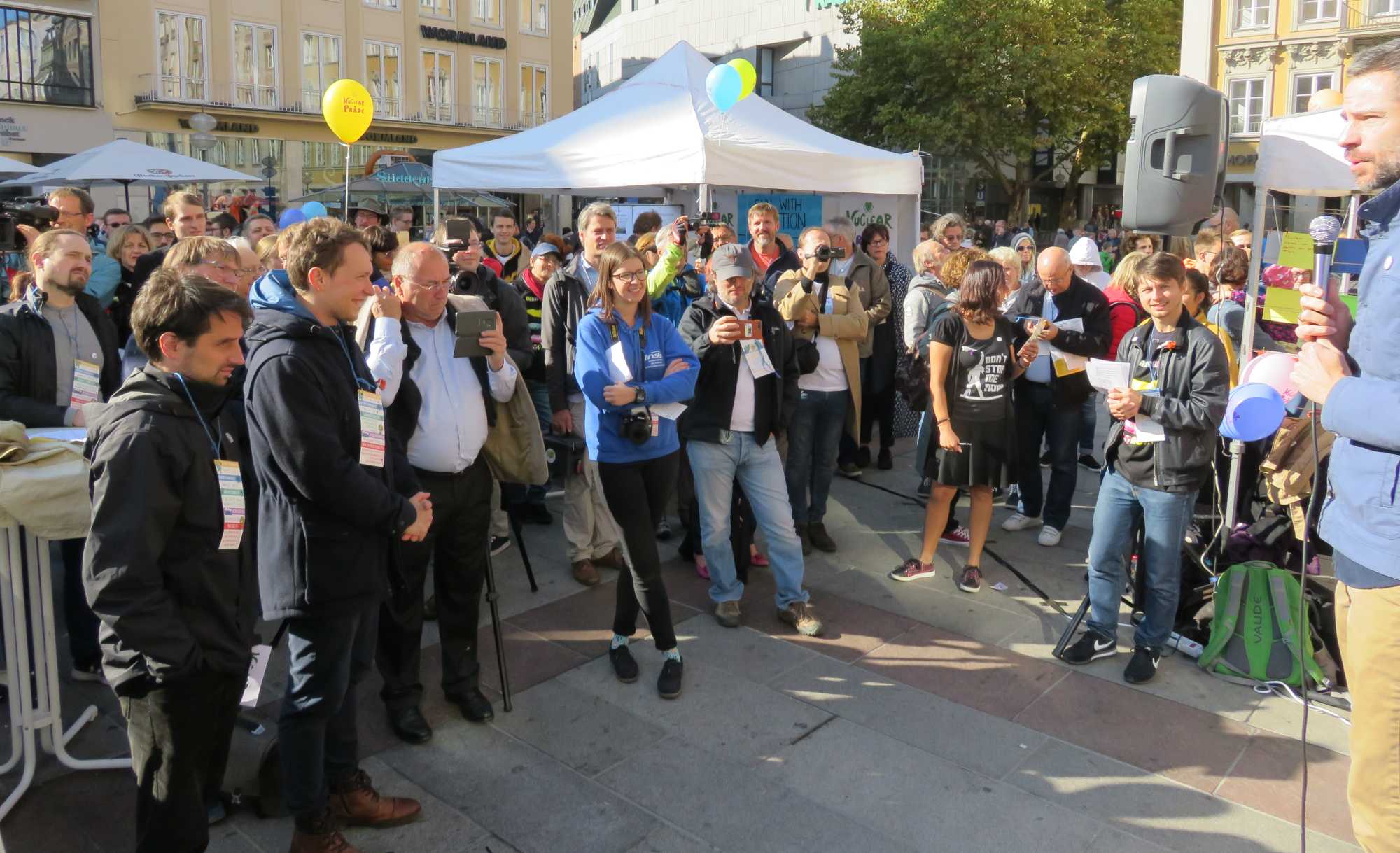The text below describes step-by-step how you can establish a translated version of an already existing post. It could be that you don’t have the permission to perform one or the other step. In this case, please notify Rainer Klute!
In the admin view, click on “Posts” in the menu of the left-hand side. The lists of all posts will open
At the original post in question, click on Edit. The post opens in the editor.
Click at the three dots symbol at the upper right. Select “Code Editor” from the menu. The editor will show the source code of the post. (Don’t worry, you don’t have to deal with the source code, unless you really want to.)
Click into the source code. Press [Ctrl+a] on the keyboard to select the complete source code. It will be highlighted.
Press [Ctrl+c] to copy the highlighted text to your computer’s clipboard. (You will have to insert it via [Ctrl+v] in a minute.) Please note the the headline is not part of the source code and will not be not copied!
Click on “Posts” again to display the list of posts.
Find the post you want to translate, and click on the “plus” symbol below the flag denoting your target language. In my case, it’s German.
A new post is opened in the editor.
Switch to the code editor. You know now how to do that, don’t you?
Click into the text field (not into the title field).
Press [Ctrl+v]. The source code is pasted into the text field.
Click at the three dots symbol at the upper right. Select “Visual Editor” from the menu. The editor will show the article in a readable fashion. And that’s really nice, because now you have a properly-formatted post (or at least it is formatted exactly the same way as the original article). You don’t have to worry about formatting, you can rather focus on the text.
Enter the title in your target language.
Translate the text by replacing the original text by your translation. DeepL will probably turn out to be very helpful.
Click on “Save Draft” to do just that.
At the right-hand side, click on “Document”. Now you can edit a couple of document properties in the sidebar on the right-hand side.
In the “Status & Visibility” section, change the author from your name to the author of the original article.
Check and edit the post’s URL in the “Permalink” section. Click open that section, if needed, and check the “URL” field. Its contents should reflect the title of your translation. However, only lower-case characters are allowed, spaces must be replaced by dashes (-), and special characters should be replaced by proper “normal” characters or be omitted. For example, if the (German) title is “Das Nuclear Pride Fest in Brüssel wird wegweisend für Belgien sein”, the URL is “das-nuclear-pride-fest-in-bruessel-wird-wegweisend-fuer-belgien-sein”. WordPress fills the URL field with what it thinks is best, but you might want to adjust it. And you will definitely have to change it manually, if you decide to change the title.
While we are at the document properties at the right-hand side, we should scroll further down and edit the category or categories of the post. They should reflect the categories of the original post, but in your target language. It is helpful to have the original and your translation in two browser windows side-by-side.
You should also edit the tags, i.e., add the translated tags of the original article.
Set a featured image, if you have one.
Fill in the “Excerpt” field. This is most often the post’s first paragraph, which should be rather short. Anyway, the excerpt should be able to stand alone. If in doubt, modify it accordingly.
Scroll the main text field down to the “Yoast SEO” settings. Click on “Edit Snippet”, and edit the meta description. It should summarize what the article is about. You don’t habe too much space here. There’s only a small range where the bar is green and not orange. Your meta description should neither be too short nor too long.
Click on “Preview” at the top to see a preview of your post.
If everything seems to be fine, click on “Publish” at the top to publish your translation. You have to verify your decision by clicking on “Publish” a second time.
If you discover any error after publishing the article, don’t worry. Go back to the editor, fix your post and click on “Update”.

